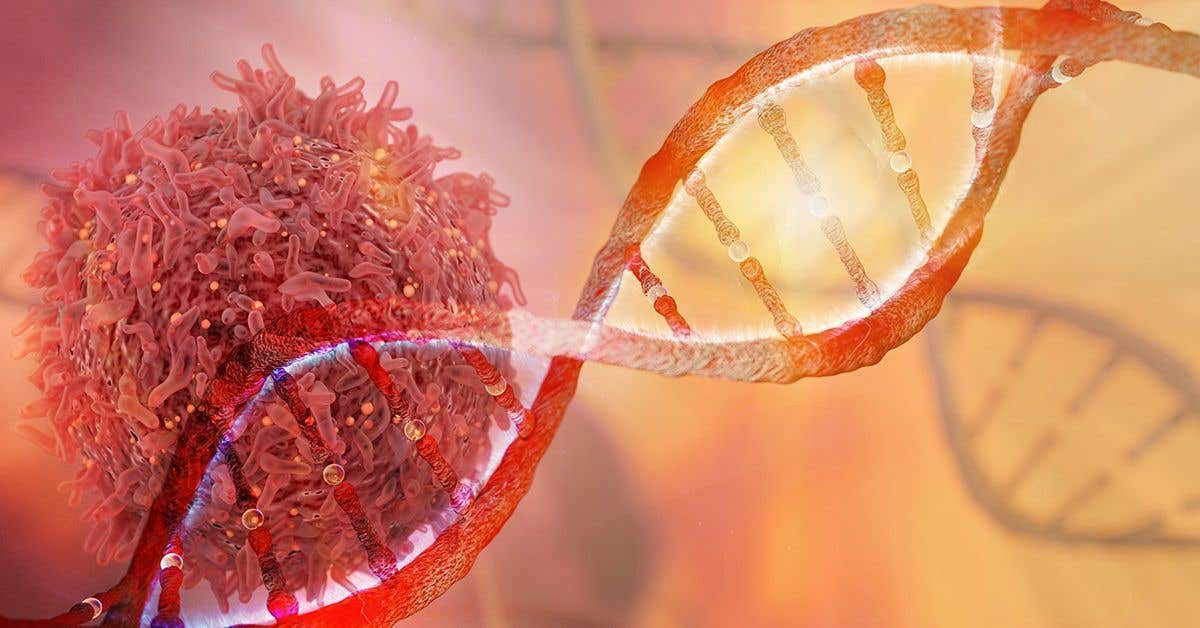Scientists engineer bacteria that can detect tumor DNA in living organisms
The bacteria are designed to detect the presence of tumor DNA within living organisms, paving the way for a new dawn in biological sensors.

[Aug. 14, 2023: Staff Writer, The Brighter Side of News]
Scientists from UC San Diego and Australia have engineered bacteria that detect the presence of tumor DNA in live organisms. Their innovation could pave the way to new biosensors capable of identifying various infections, cancers and other diseases. (CREDIT: iStock/CIPhotos)
In an era where technology continues to blur the boundaries between the digital and biological realms, a revolutionary development has emerged from the labs of the University of California San Diego, in conjunction with Australian researchers. These scientists have crafted bacteria designed to detect the presence of tumor DNA within living organisms, paving the way for a new dawn in advanced biological sensors.
This innovative research, which detected colon cancer in mice, has been published in the Science journal. Its implications are profound: envision a world where biosensors could identify a plethora of infections, cancers, and various diseases. This leap forward addresses a gap in our scientific arsenal.
While bacteria have been engineered for numerous diagnostic and therapeutic roles in the past, they lacked the capability to pinpoint specific DNA sequences and mutations outside cells. Addressing this gap is the newly conceived "Cellular Assay for Targeted CRISPR-discriminated Horizontal gene transfer," fondly abbreviated as “CATCH”.
Reflecting on the beginnings of this groundbreaking project, scientific team leader, Jeff Hasty, a distinguished professor affiliated with UC San Diego’s School of Biological Sciences, Jacobs School of Engineering, Department of Molecular Biology, Shu Chien-Gene Lay Department of Bioengineering, and Synthetic Biology Institute, commented,
Related Stories:
"As we embarked on this journey four years ago, the feasibility of using bacteria as mammalian DNA sensors remained an enigma." Hasty expressed optimism about the potential clinical applications of their invention, particularly in detecting gastrointestinal cancers and precancerous anomalies.
The science behind this stems from the behavior of tumors. They shed their DNA into the surrounding environments. Though current technology facilitates the analysis of purified DNA in controlled lab settings, there's a conspicuous inability to detect DNA in the environments they're released. The CATCH methodology provides an elegant solution. It capitalizes on CRISPR technology to examine free-floating DNA sequences on a genomic level, juxtaposing these samples against known cancer sequences.
Elaborating on this, Rob Cooper, the study’s co-first author and a pivotal figure at UC San Diego’s Synthetic Biology Institute, explained, "Numerous bacteria possess the aptitude to absorb DNA from their surroundings, an attribute termed as 'natural competence'." Cooper, together with Hasty and Australian doctor Dan Worthley, explored the concept of natural competence in relation to bacteria and colorectal cancer—a major cause of cancer-related fatalities in the US.
Their approach was both novel and audacious: leverage the bacteria abundant in the colon as innovative biosensors. The focus was on Acinetobacter baylyi, a bacterium wherein Cooper discerned the essential components for DNA absorption and its subsequent CRISPR-based analysis.
Worthley, an expert gastroenterologist and cancer researcher associated with the Colonoscopy Clinic in Brisbane, Australia, highlighted their aspirations, "Our goal was to develop bacteria that would detect tumor DNA precisely when and where the disease manifested."
Upper: The bacterium A. baylyi can incorporate DNA from its environment through natural competence. This allows horizontal gene transfer and the integration of cell-free DNA into the A. baylyi genome. Lower: Researchers engineered A. baylyi to find the mutated KRAS gene, which helps colorectal cancers grow. Detection of tumor DNA activated an antibiotic resistance gene to confirm that a tumor was found. (CREDIT: Cooper et al)
With the collaboration of Susan Woods and Josephine Wright from Australia, Acinetobacter baylyi was fashioned into a sensor, specifically attuned to the DNA from KRAS—a gene frequently mutated in numerous cancers. This bacterium was equipped with a unique CRISPR system that distinguished between mutant and non-mutant versions of KRAS, ensuring only the bacteria that absorbed the mutant variations would thrive, thus signaling the presence of the disease.
Peeling back layers, this innovation leans heavily on the concept of horizontal gene transfer, where organisms interchange genetic material in a manner deviating from the conventional parent-offspring genetic inheritance. Remarkably, this project transcended the usual bacterial confines of horizontal gene transfer, applying the methodology from mammalian tumors and human cells into bacteria.
Graphic: Engineered bacteria to detect tumor DNA. (CREDIT: Cooper et al)
A moment of epiphany for Wright was when she observed the bacteria incorporating tumor DNA. "Observing the mice with tumors developing green bacterial colonies, capable of thriving on antibiotic plates, was a surreal experience," she shared.
Optimistic about future prospects, the research team is now redirecting their focus on adapting the bacteria biosensor approach, experimenting with new circuits and varied bacterial strains to detect and combat human cancers and infections. Woods, reflecting on the potential, opined, "Considering colorectal cancer's setting amidst a bacterial milieu, the prospect of engineering bacteria to either promote or obstruct its progression is tantalizing."
As seen in a dish, Acinetobacter baylyi (green) bacteria surround clumps of colorectal cancer cells. (CREDIT: Josephine Wright)
Siddhartha Mukherjee, Associate Professor at Columbia University, while not directly involved in the study, expressed enthusiasm about the ramifications of this discovery, "The future will see diseases combated by cells, not mere pills. The potential of a live bacterium proficient in DNA detection within the gut offers a colossal opportunity to preemptively identify and eliminate gastrointestinal cancers and beyond."
While the path forward involves refinement and further development, Hasty and his team at UC San Diego are unwavering in their commitment to perfecting this biosensor approach. Echoing a shared sentiment, Worthley concluded, "A future free from the specter of colorectal cancer is conceivable. We envision our endeavors benefiting bioengineers, scientists, and ultimately, clinicians, as we chase this noble objective."
The coauthors of the Science paper are: Robert Cooper, Josephine Wright, Jia Ng, Jarrad Goyne, Nobumi Suzuki, Young Lee, Mari Ichinose, Georgette Radford, Feargal Ryan, Shalni Kumar, Elaine Thomas, Laura Vrbanac, Rob Knight, Susan Woods, Daniel Worthley and Jeff Hasty.
Note: Materials provided above by the The Brighter Side of News. Content may be edited for style and length.
Like these kind of feel good stories? Get the Brighter Side of News' newsletter.
Joseph Shavit
Head Science News Writer | Communicating Innovation & Discovery
Based in Los Angeles, Joseph Shavit is an accomplished science journalist, head science news writer and co-founder at The Brighter Side of News, where he translates cutting-edge discoveries into compelling stories for a broad audience. With a strong background spanning science, business, product management, media leadership, and entrepreneurship, Joseph brings a unique perspective to science communication. His expertise allows him to uncover the intersection of technological advancements and market potential, shedding light on how groundbreaking research evolves into transformative products and industries.



